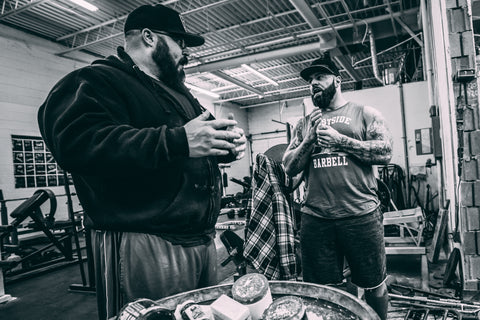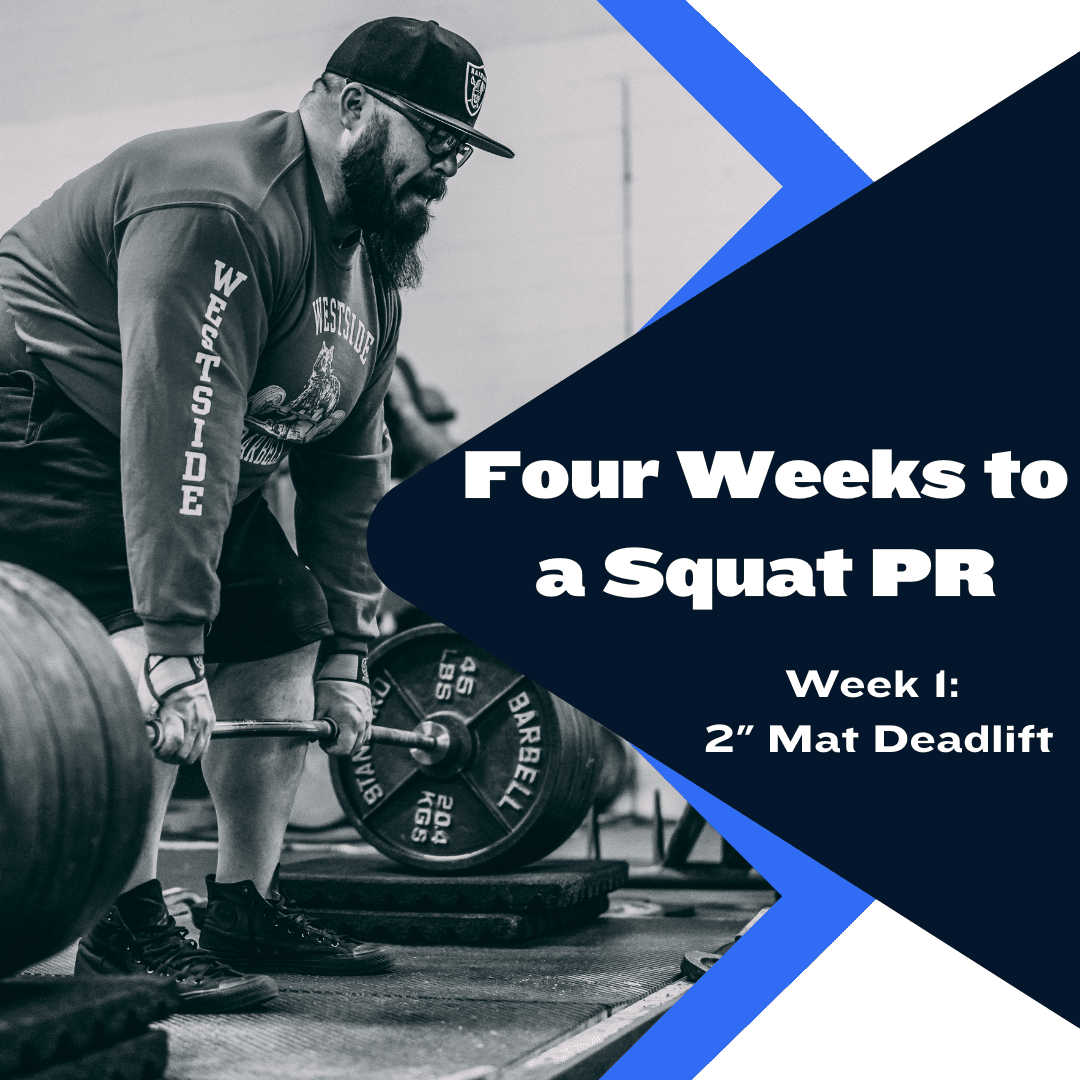Four Weeks to a Squat PR: Week 1

Successful Conjugate Method training depends on accurate training data and tracking max effort single-rep lifts. When organized correctly, an athlete’s programming should ensure that current training maxes are established at least once every six to eight weeks. This is important to ensure that dynamic effort training is performed using training weight that is as relevant as possible to the current strength level of the athlete.
Max effort lower body training days are essential, considering this is where we will establish at least two of the training maxes we need to ensure our dynamic training is as effective as possible. When performing max effort lower, we will alternate between squat, deadlift, and good morning exercise variations, specifically utilizing max effort lower to establish current maxes in the squat and deadlift.
Over the next four weeks, we will review a training plan to provide an athlete with the ability to PR while performing a max-effort single-rep squat. This series intends to show how we regulate volume, intensity, and exercise selection over four weeks to give an athlete the strength and energy needed to attain a new PR lift in the squat.
Main Exercise
We will use a deadlift variation as we begin the first week of the four-week squat PR plan. Considering we are in the first week of our four-week PR training plan, it makes sense to schedule a deadlift variation to allow for optimal recovery by the time week four rolls around. We will perform a 2” mat deadlift for a top set single rep in this case.
This variation will not only challenge the entire body, but it will specifically challenge the lower back, glutes, and hamstrings. However, with the bar being elevated 2” off the floor, the athlete will be provided with a joint angle advantage. This will keep total intensity under control and allow the athlete to be totally recovered by the end of week three. As we work up to a max effort single with this variation, we can see whether or not the targeted muscle groups are particularly weak.
While four weeks won’t be enough time to make significant changes in a newly found weakness, we can at least begin addressing the weakness before working up to our max effort squat attempt in a few weeks. We regularly employ this strategy at Westside Barbell; we use a max-effort exercise variation to emphasize specific muscle groups to see if these groups need additional attention during our accessory exercise training.
Here is how an athlete with an 800lb 2” mat deadlift PR would perform this exercise:
Set 1 - 135lbs x 8 reps
Set 2 - 225lbs x 5 reps
Set 4 - 315lbs x 5 reps
Set 5 - 405lbs x 3 reps
Set 6 - 495lbs x 1 rep
Set 7 - 600lbs x 1 rep
Set 8 - 700lbs x 1 rep
Set 9 - 815lbs x 1 rep (PR)
As you can see, we initially begin by warming up with lighter weights, performing 5-8 total reps. Once we reach 495lbs, we will start taking slightly larger jumps in weight while performing single reps only. This ensures we reach the top set with enough energy to establish a new PR lift.
In this case, the athlete ends up with a 15lb PR in the 2” mat deadlift, so we do not have to worry about explicitly addressing weakness in the lower back, glutes, or hamstrings.

Accessory Exercises
With a new 2” mat deadlift PR established, the athlete has likely accrued a bit of fatigue since the beginning of the workout. Considering this, we want to control our accessory exercise volume to allow the athlete to recover for the next week and ensure the athlete is as recovered as possible when we go for a squat PR in week four.
When we have a PR attempt in our sights, we want to ensure we are doing enough work to allow for some improvement to be made before the week of the attempt. Still, we also want to leave enough room for optimal recovery from training session to training session and week to week.
Here are the lower body accessory exercises for week one:
Exercise 1 - Goblet Squat, 3 x 10-12 reps.
Exercise 2 - Belt Squat Walk, 5 x 60 steps.
Exercise 3 - Reverse Hyper, 4 x 15-20.
Exercise 4 - GHR Sit-Ups, 4 x 15-20
The week one exercise accessory exercise selection is relatively limited. Aside from the goblet squat, the remaining exercises are typical exercises performed every lower body training day. After a max effort deadlift variation, putting an athlete through grueling accessory exercises makes no sense.
The goal when performing these exercises is to get the work done and get home to begin the recovery process for next week. With this selection of accessory exercises, we focus on building hip and quad strength with the goblet squat and hip and glute strength with the belt squat walks. Additionally, the belt squat walks help to traction the lower back, which is also a benefit of the Reverse Hyper machine. We finish up with GHR sit-ups to target the abs and hip flexors.
These accessory exercise selections will help build strength and work capacity and help keep the lower back healthy and ready to squat a personal record.
Recovery Management
One of the most important aspects of training is recovery management. When preparing for a scheduled PR attempt, an athlete should focus on achieving meaningful training and adequate recovery in the weeks leading up to the PR attempt. Too often, athletes believe getting more work done will mean more strength gained, but this is not the case.
As we move towards the PR squat attempt, we want to ensure the athlete has plenty of energy in reserve to allow for a PR lift to be completed without causing excess fatigue or injury that could derail the training process. While the PR lift is important, it is just as crucial for the athlete to maintain the ability to continue with the training plan as scheduled.
Successful Conjugate Method training depends on proper recovery management. Our methods require athletes to perform exercises at specific levels of volume and intensity with specific training intent. Maintaining an optimal balance of training volume, intensity, and recovery time is crucial to ensure this is possible.
Additionally, an athlete must also be able to estimate their fatigue level within a training session. No matter what was called for before the workout, we always want to consider how we feel after a max effort main exercise and adjust accessory exercises as needed.
PR strength can only be displayed when training and recovery methods work together. Training is only part of the equation; recovery is just as important.
Sources:
Simmons, L. (2007). Westside Barbell Book of Methods. Westside Barbell.
Verkhoshansky, Y., & Siff, M. C. (2009). Supertraining. Verkhoshansky.
Zatsiorsky, V. M., & Kraemer, W. J. (2006). Science and Practice of Strength Training. Human Kinetics





